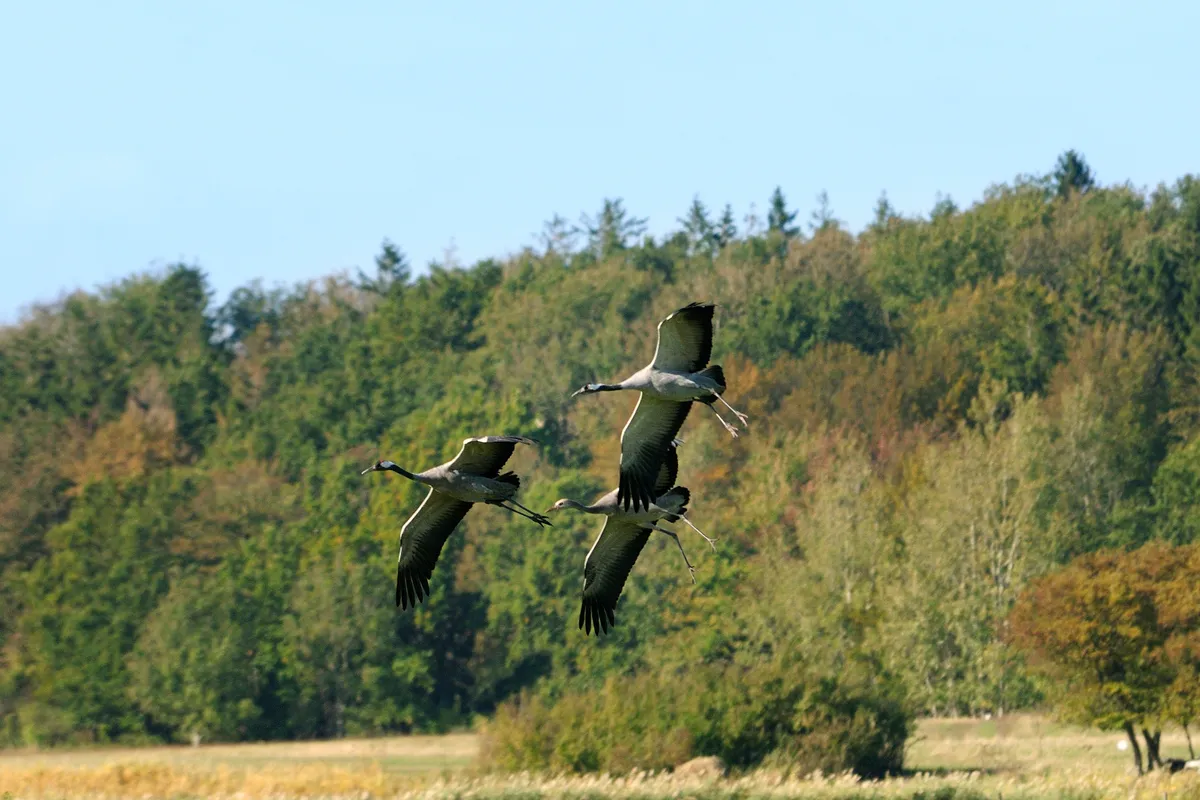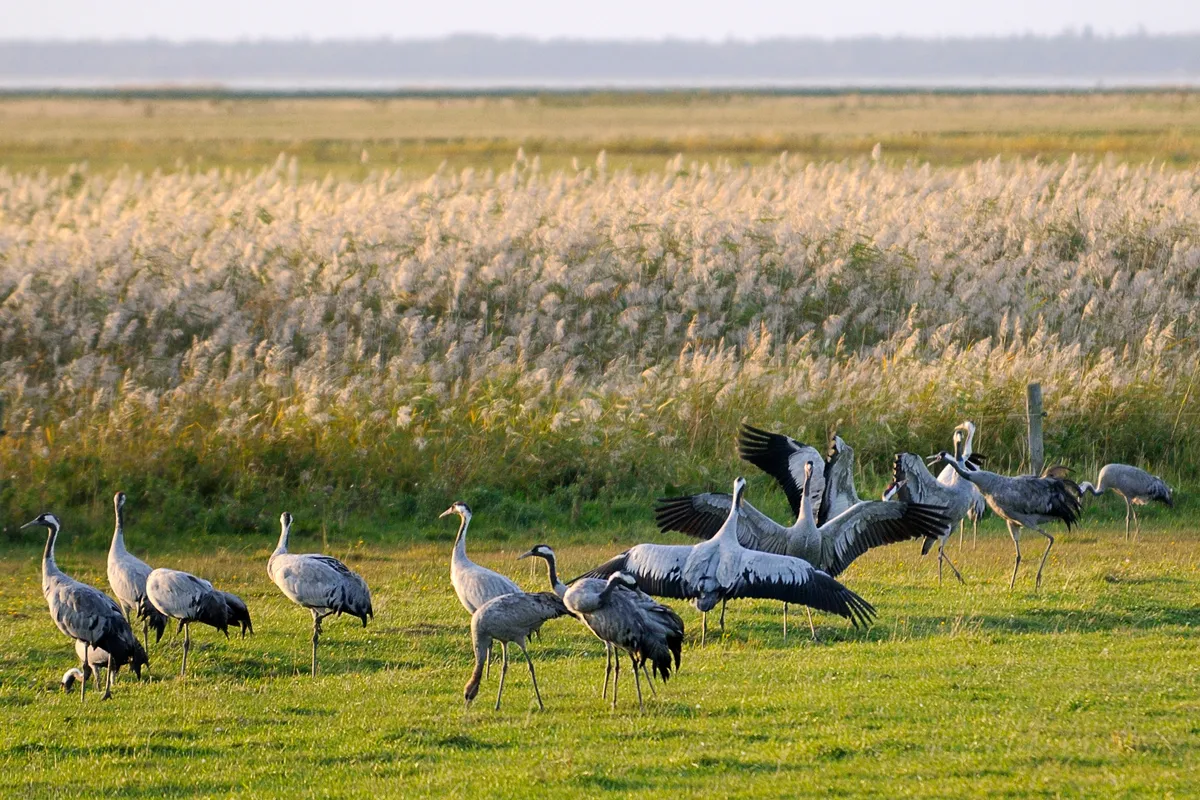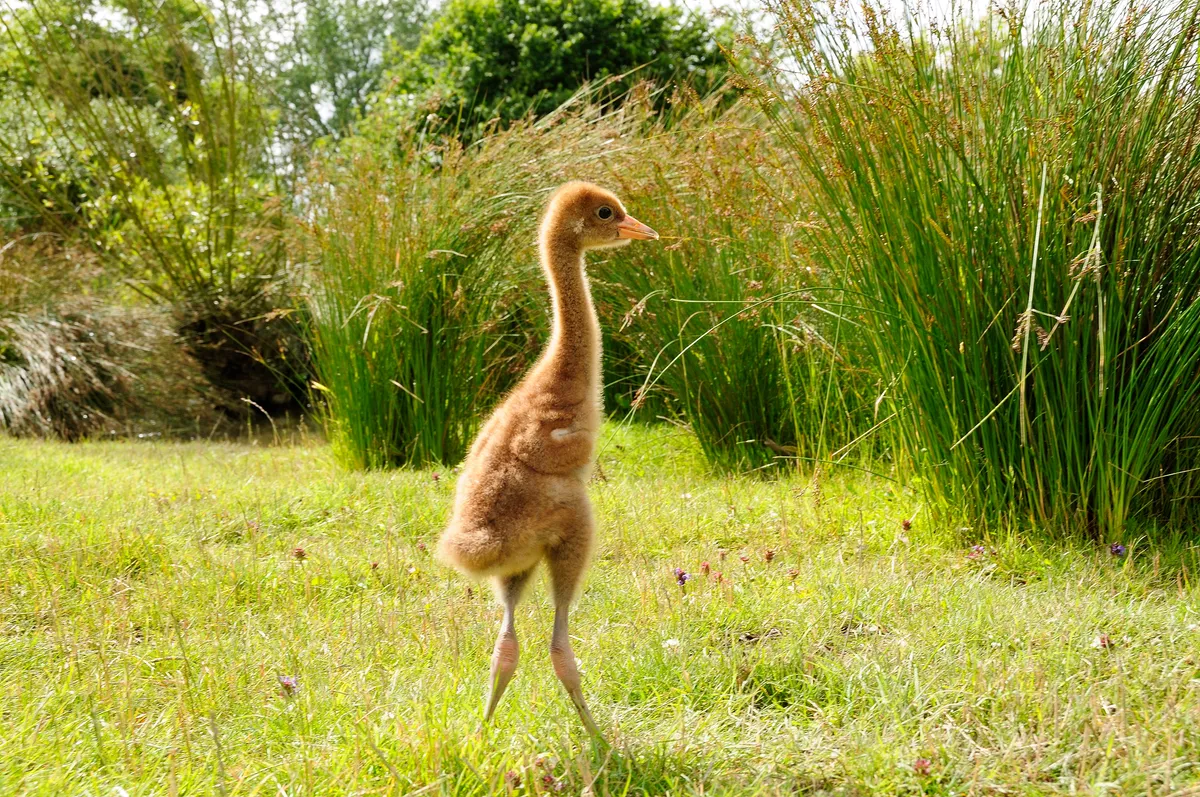Stately and refined, these iconic birds are well worth looking out for. And as some of the largest and loudest birds in the UK, you shouldn't have too difficult a time in finding one! You will have to make sure you are in the right place however, as they are few and far between.
The story of the common crane in the UK is one of a devastating decline and an almost miraculous return. After being absent from the UK for centuries they have recently begun to re-establish themselves in small pockets, helped along by some amazing conservationists.
Read on to find out more about these beautiful birds, their remarkable story, and how you can help them to survive and thrive in our expert guide by the RSPB:
What is the scientific name of the common crane?
The scientific name of the common crane is Grus grus. This is an example of a tautonym where the genus and specific name are the same.
The common crane is also known as the Eurasian crane, and is the main crane species seen in Europe – the demoiselle crane is found in some European species.
How to identify the common crane
The common crane is the UK’s tallest bird, standing around 4 ft tall. It’s a graceful bird with long legs, an elongated neck and drooping, curved tail feathers. It’s mainly grey as an adult with a black and white head, and a patch of red behind the eye. In flight, their legs trail behind them with their neck stretched out long in front.
It’s also a contender for the loudest bird in the UK with a piercing, honking call.

Where are common cranes found?
There is a small breeding population in Norfolk, a re-introduced population in Somerset, and small numbers pass through Britain in spring and autumn.
How many common cranes are there?
2020 was a record year for cranes, with 64 pairs fledging 23 chicks. There are now over 200 in the UK in total.
What do common cranes eat?
Cranes are omnivores taking a range of invertebrates, small vertebrates, and plant seeds, roots and shoots. Large invertebrates, such as earthworms, beetles, caterpillars, grasshoppers, and snails appear to be particularly important during the chick-rearing period. The young are fed by their parents until they gradually become self-sufficient at three months.

What eats the common crane?
There are very few things that predate adult birds in the UK, though white-tailed eagles do elsewhere in Europe. The main threat currently comes from foxes, otters and marsh harriers taking eggs and chicks.
How long does the common crane live for?
In the wild cranes normally live for about 20 years, though they have been known to reach 40 years old.
What does a common crane’s call sound like?
Cranes have a loud, clanging and far-carrying trumpeting note, given in flight and on the ground. They also have fantastic courtship rituals that involve a duet with a jubilant quality, rich and brassy – one will initiate the duet, with the partner instantly replying.

How many eggs does a common crane lay?
There are normally two eggs, with both parents looking after the chicks. The parents also share incubation.
Is the crane endangered?
Until recently, there hadn’t been a single breeding crane in the UK for 400 years – they’d all been lost because of loss of wetland habitat and hunting. They still lived across northern parts of Europe and across to Siberia, and in the 1970s a few had found their way back to the UK and established a small precarious population in Norfolk. Globally, they are not threatened.
What work is being done to help the crane?
The UK Crane Working Group does tremendous work by bringing together conservation bodies, land managers and other private individuals concerned with crane conservation across the UK.
There is also the Great Crane Project, which was founded in 2009 with the goal of making the common crane a familiar sight across the UK once more. This partnership between the RSPB, Wildfowl and Wetlands Trust, Pensthorpe Conservation Trust, and Viridor Credits Environmental Company, brought crane eggs over from Germany with the plan to raise and release the chicks in south-west England. Cranes don’t tend to breed until they’re about four or five, so it was only in 2015 that the first chicks were born from these released birds.

How can the public help the crane?
Cranes are quite vulnerable to disturbance, particularly during the breeding season, so everyone can help by keeping their distance and allowing these birds to feel safe in their surroundings. If you’re a landowner of wetland sites, you can also encourage them onto your land by offering secluded areas with shallow water to nest and open semi-natural habitats for foraging.
The RSPB is the UK’s largest nature conservation charity, inspiring everyone to give nature a home. Together with our partners, we protect threatened birds and wildlife so our towns, coast and countryside will teem with life once again. We play a leading role in BirdLife International, a worldwide partnership of nature conservation organisations.
Main image: Adult common cranes at Lakenheath Fen RSPB reserve, Suffolk, England. © Andy Hay/RSPB
